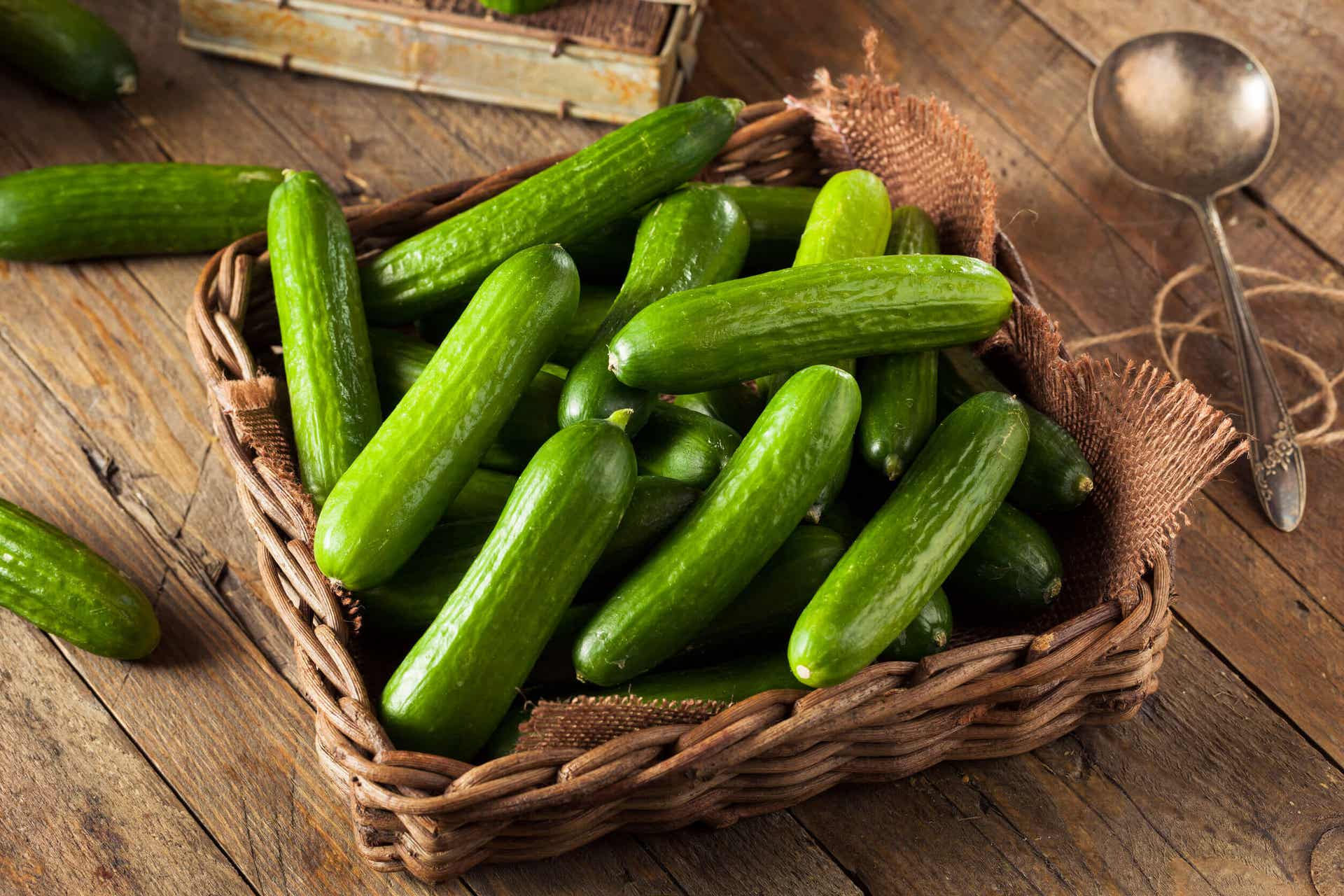When and How to Add Cucumber to Your Baby's Diet?


Written and verified by the nutritionist Maria Patricia Pinero Corredor
As our children grow, their nutrient and energy needs increase. That’s why new foods should be introduced into their diet, always prioritizing the healthiest options. And having said that, adding cucumber to your baby’s diet isn’t a crazy idea. It’s one of the freshest vegetables and is a source of some nutrients that, as a whole, are beneficial for their growth.
Cucumber’s a refreshing vegetable for little ones’ gums and when cut into strips, it’s easy to hold. However, a little care should be taken, as it can be a choking hazard. That’s why they should be prepared safely, according to the age of the child.
Later, we’ll show you when and how to add cucumber to your baby’s diet in a safe and nutritious way. This way, you’ll be able to take advantage of the benefits of this versatile and healthy food.
When can babies eat cucumber?
The best time to introduce cucumber to a baby’s diet is when they start eating solids, around 6 months of age. However, you could also wait until your child reaches 9 months.
In both cases, experts recommend serving it in the form of puree, in order to inactivate the cucurbitacin. According to some researchers, this compound has medicinal properties, but it can be difficult for babies to digest, as it causes belching and stomach discomfort.
In order to eat raw cucumber, children should wait until they’re 12 months old. By this stage, babies have more teeth, and their digestive system is better developed.

The benefits of introducing cucumber to your baby’s diet
One of the most noticeable benefits of cucumber for babies is its high level of hydration. In fact, 95% of this fruit is water, which allows it to relieve thirst and replenish mineral salts.
In addition, Nutrients magazine highlights the importance of water in food as an additional source of hydration. If a baby suffers from constipation, a good dose of liquid could improve their condition.
According to the Spanish Nutrition Foundation, cucumber contains vitamin C, folic acid, vitamin K, magnesium, potassium, and manganese. By introducing cucumber to your baby’s diet and combining it with other fruits, such as apples or pears, you can contribute to a balanced diet and ensure adequate nutrition.
The World Health Organization (WHO) states that raw fruits with their skin have more benefits than when you boil or puree them. So, once babies are better able to chew and there’s less risk of choking, they can eat cucumbers in small raw portions.
Cucumbers can also be a good solution for a baby’s teething discomfort. Refrigerated or frozen fruit rings relieve itchy gums.
To do this, slice a fresh cucumber, dip it in a natural puree, and put it in the freezer. Before offering it to your baby, let it thaw at room temperature so that it doesn’t stick to the tongue or mouth. Keep a close eye on your baby to avoid choking.
Read also: 9 Benefits of Cucumber Juice
How can I include cucumber in my baby’s diet?
In order to prevent foodborne illness, it’s essential that you wash cucumbers and other vegetables thoroughly. The most practical way to sanitize them is to soak them in water with a few drops of food-safe bleach and let them stand for 10 minutes.
Adequate amounts of disinfectant should be used to avoid flavor and texture changes in cucumbers. Before immersing them in water, contaminants should first be removed from the skin using the tap. This prevents germs from passing from the outside to the inside of the flesh.
It’s also a good idea to taste the cucumber before giving it to your child, as there are some bitter varieties that are unpleasant for babies.
Your pediatrician will always have the final say on the inclusion of new foods. However, here are some tips on how to safely add cucumber to your baby’s diet.
Babies from 6 to 9 months old
When your baby begins to eat solids, cucumber can be included without skin, seeds, and in the form of puree. Raw cucumber should never be recommended for this age group. Rather, steaming or boiling the vegetable for 10-15 minutes is ideal.
Cucumber can be cooked with the skin in order to avoid loss of nutrients. However, once it’s cooled off, you should peel it, cut it into pieces, and put it in the blender.
According to the Centers for Disease Control and Prevention, when introducing solid foods to infants, you should do it one at a time. In other words, you shouldn’t combine it with other products. This will help you rule out or identify any food allergies or intolerances.
Discover: Cucumber Water is a Natural Diuretic
Babies from 9 to 12 months
From the age of 9 months onwards, you can offer crushed cucumbers in order to obtain a slightly coarser texture. You can use a fork and a little of the leftover water from boiling to do so.
At around 12 months of age, you can offer raw cucumbers cut into long, wide, thin slices, without the skin. When your baby develops a pincer grasp, you can offer them small pieces in addition to the long slices.

Babies from 12 months and older
From the age of 12 months, to make the best use of the cucumber’s nutrients, you can keep the skin on. This is where the greatest amount of fiber, vitamins and, minerals are found. The pieces should be small, but shouldn’t represent a choking hazard.
At this age, babies can pick up cucumbers cut into simple slices. You can show them how they can take small bites.
Cucumbers can be cut in the shape of stars, bears, or hearts to spark more interest. To help you, you can also use vegetable-cutting molds.
Cucumbers for your whole family
Cucumbers don’t represent the most nutrient-rich vegetable with which to start your children on solid food. However, when prepared in the right way, they help to diversify your baby’s diet and add hydration to their new menu.
The whole family can benefit from this vegetable. Learn various recipes and delight young and old with the culinary versatility of this product.
All cited sources were thoroughly reviewed by our team to ensure their quality, reliability, currency, and validity. The bibliography of this article was considered reliable and of academic or scientific accuracy.
- Kaushik U, Aeri V, Mir SR. Cucurbitacinas: una visión de las pistas medicinales de la naturaleza. Pharmacogn Rev . 2015; 9 (17): 12-18.
- Guelinckx I, Tavoularis G, König J, Morin C, Gharbi H, Gandy J. Contribution of Water from Food and Fluids to Total Water Intake: Analysis of a French and UK Population Surveys. Nutrients. 2016;8(10):630.
- Mukherjee PK, Nema NK, Maity N, Sarkar BK. Phytochemical and therapeutic potential of cucumber. Fitoterapia. 2013 Jan;84:227-36.
- Fundación española de Nutrición. Pepino. Disponible en: https://www.fen.org.es/MercadoAlimentosFEN/pdfs/pepino.pdf
- Organización Mundial para la Salud. La alimentación del lactante y del niño pequeño. Disponible en: https://www.paho.org/hq/dmdocuments/2010/IYCF_model_SP_web.pdf
This text is provided for informational purposes only and does not replace consultation with a professional. If in doubt, consult your specialist.








